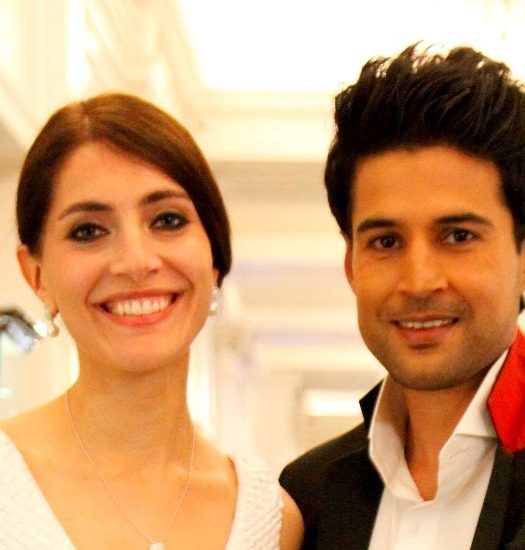‘I suggested using fewer colours’ : Cinematographer Artur Zurawski on the making of Mardaani
Polish cinematographer Artur Zurawski, PSC (Polish Society of Cinematographers) talks about his experience on being a non Hindi speaking crew member on the set of his recently released film Mardaani, why he used less colours in the film and his first time collaboration with Rani Mukherjee.
How did your filmmaking journey start? Please tell us about your work done prior to your first Indian stint?
I started as a still photographer when I was 14. I lived in a small town – Chojna (west of Poland). Our home was surrounded by hazy forests. I spent many years working in my darkroom creating black and white stills; exhibiting and publishing my pictures. I studied fine arts and worked as an assistant director, animator and still photographer. A short film, non computer animated movie (Piet Mondrian-1995 dir. Jacek Kasprzycki) was my first professional encounter with the regular cinema. After that I studied at Polish National Film School in Lodz.
During four school years I did many short films with student-directors from different countries and also directed few of them as well. After school I worked as a camera operator and gradually started to work as a cinematographer shooting fictions, documentaries, commercials and music videos. Before Mardaani I shot Jackpot directed by Kaizad Gustaad. But my first brush with Indian cinema was three years ago during Azaan directed by Prashant Chadha. I was doing second unit only but outside of India: Morocco, Poland and South Africa.
Do you understand Hindi language? If not, how do you work your way around the language bit? How important is it to know the language for the technician on the shoot?
I understand Hindi a little bit. Even in Bollywood films I have worked on so far, English is the main language on the set. The original scripts were in Hindi and for me the English versions were done. Of course understanding the dialog is crucial for a DOP. You can’t create a proper image without knowing the full meaning of a scene.
For example: If there is a scene wherein the character is very aggressive or it’s a scary scene, a cinematographer may underline by showing it in a bright light or in a dark shadow. Or one can use long or opposite wide lens. In both situations the given information is the same but the feel and the meaning is much different. So knowing that difference is important.
What did your shooting gear consist of?
In Mardaani my main camera was Arri Alexa Studio and mostly Zeiss optics.
How many days did you shoot and what were the locations?
We shoot this film in around 57 days in Mumbai, Delhi and Rajasthan and weather was mostly very predictable. Also many days we have spend in studio.
What’s the director’s brief for cinematography of the film?
Director Pradeep Sarkar was very keen to show the cities in a new way. He wanted to bring fresh look to this story.
What was your cinematic creative addition to his brief?
For me, India is exploding with colours and also Indian films are extremely colourful. I suggested using fewer colours, less saturated set and costumes. I have done camera tests with full postproduction process and screened it for the director and producer. Once approved we followed it during the entire shoot. Also we were avoiding high speed in action scenes to give it a natural feel.
Where was the post work done?
I did the colour correction in Reliance with colourist Ken Metzker and the VFX in Tata Elxsi.
As I mentioned earlier, we did the camera tests many weeks before the main shoot. During postproduction of the trailer – about two months before the film release – we applied our main setups and did final touches. Therefore before starting the main film grading I was fully prepared and convinced about my decisions.
How was your experience working with YRF and Aditya Chopra?
Aditya Chopra kept an eye on everything from the script to the final edit and giving the creative freedom during the whole process. He gave clarity with his quick decision making and was an immense guiding force.
How was your experience working with Rani Mukherjee?
During the shoot of Jackpot, I watched some Indian movies and had picked up the DVD of Black and showed it to my family in Poland and everybody loved the film. When I met Rani (Mukherjee Chopra) for this film it was great. My son shares the same birthday as Rani. I like her sense of humour a lot. We joked a lot while shooting. She was discussing every single dialogue and performance and mostly each scene was enhanced by her ideas as well.
Do you continue to work in Poland and have you thought of moving here?
For me it is very important to have fresh point of view. So it is good to change places. India is a fascinating country but it is better to leave her and come back after some time.
You have worked in Europe, US and India. How would you compare the kind of equipment used here and abroad?
The equipment is mostly the same and differences are not significant.
What is the biggest difference?
The number of crew members. When we were shooting in Rajasthan I asked for a minimal crew because I wasn’t going to use any lights and special grip. We shot at the location with 160 people.
– By Priyanka Jain




